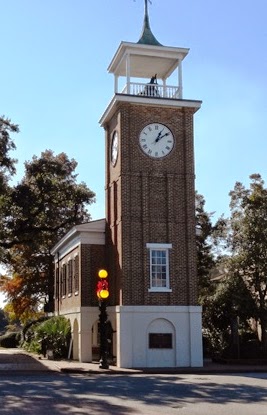Today’s
soft dusting of snow cloaked the trees and bushes in a white mantle. It felt like living in a snow globe. The world was transformed and the drab and ordinary
disappeared in a magical moment. Christmas
is like that – a magical time of year that provides a little more merriment and
a dash of sparkle as we celebrate the wonder of the season.
 |
The bright red of the cardinals against the background
of white adds a real holiday feel |
The
hope and promise of the birth of the Christ Child is the essence of
Christmas. A star guided the three Wise
Men to Bethlehem. A bright light
appeared to the shepherds as angles announced the birth of the Light of the
World. Lights have always been
associated with Christmas and represent man’s hope for a bright new world. While the commercialism of the season can be
overwhelming at times, there is still a sense of joy and, indeed, hope that is expressed
in light displays that dance in the night.
 |
| The tunnel changes colors from reds to purples as you walk through |
 |
The Climatron at Missouri Botanical Garden behind a dazzling
display of lights in the garden's fountains |
 |
| Every branch of this tree is covered in brilliant blue LED lights |
 |
| A fairy princess among the lighted trees at the Missouri Botanical Garden |
We
previously wrote about the Holiday Festival of Lights in Charleston, but
various locations right here in the St. Louis area feature festive lighting displays. Commercial enterprises (Yogi Bear’s
Jellystone Park in Eureka), religious institutions (the Shrine of Our Lady of
the Snows in Bellville) or municipal venues (Tillis Park in St. Louis County or
the St. Louis Zoo in the city) are all quite impressive. Another spectacular display that can be “experienced”
more than just “viewed” is the Garden
Glow at the Missouri Botanical Garden, popularly known as Shaw’s Garden. The Garden
Glow is in its second season. We
have attended both years, and this second edition far exceeds last year’s initial
offering. The dazzling display focuses
on light, nuances of color, and pattern instead of figures or dioramas. No animated elves or lighted deer. Music at several sites adds to the sensory
experience. Walking through shimmering tunnels or amid dozens of vibrantly
colored trees makes you feel like you’ve stepped into the wondrous fairyland that
you imagined as a child.
 |
These three lighted "trees" are the first things that you see as you begin
your walk through the Garden Glow at Shaw's Garden |
 |
| Another view of the lights and their reflected images in the fountains |
 |
One of several building on the grounds of the Missouri Botanical Gardens
decorated for the Garden Glow. Corporate sponsors pay for each display. |
 |
The Garden's administrative offices are visible behind this shimmering
display of live Christmas trees decorated in gold |
 |
| Our tree at home |
From
our house to yours, we wish you a joyous and blessed Christmas.
 |
| Among the decorated trees at the Garden Glow at Shaw's Garden |
 |
| Sophie waits patiently for Santa Claus |
And may “merry and bright” be a part of each
of your Road Stories.
 |
| Merry Christmas from Yvonne and Mike |
Congratulations to my Mom and Dad, Dorothy and Tracy Brown, celebrating
their sixty-sixth (66th) wedding anniversary today, December 18.











